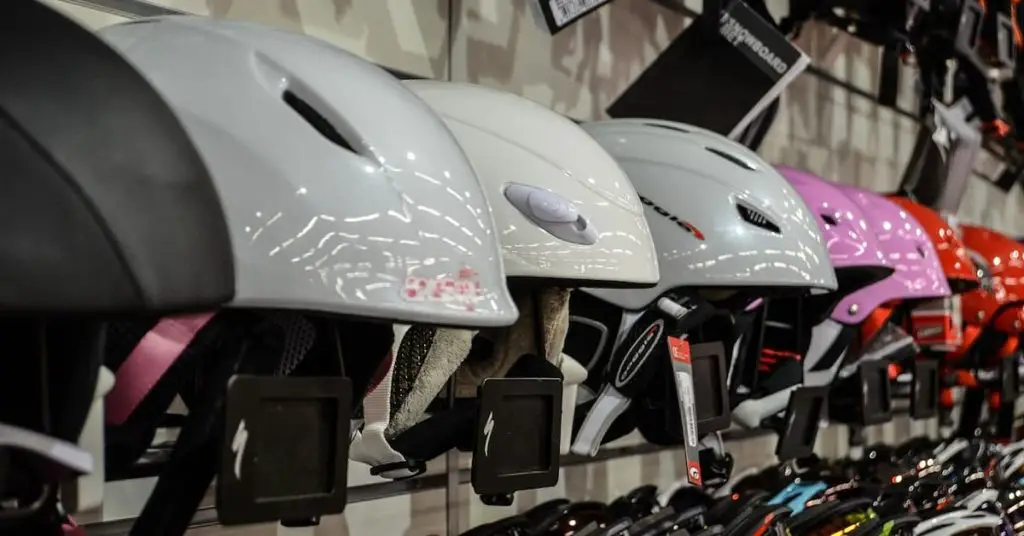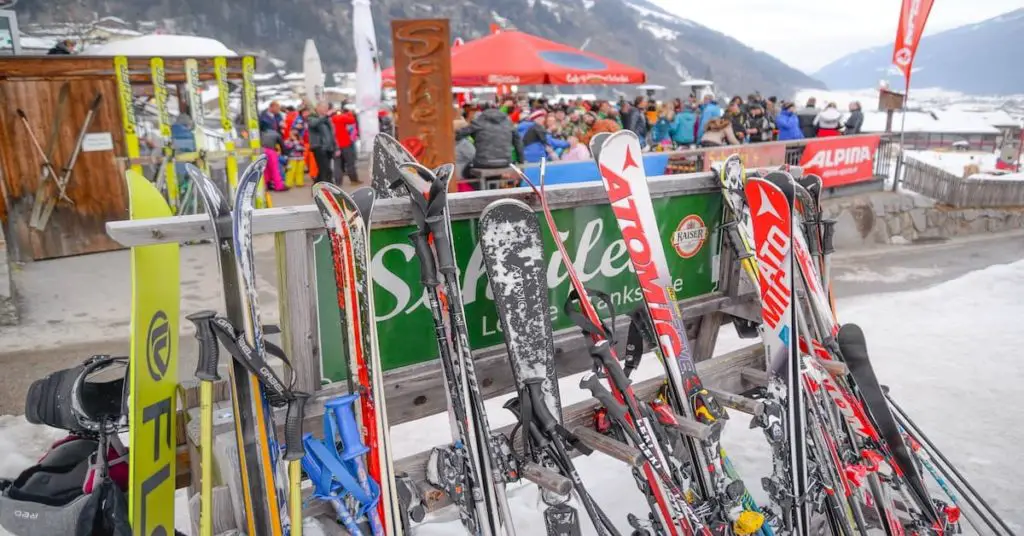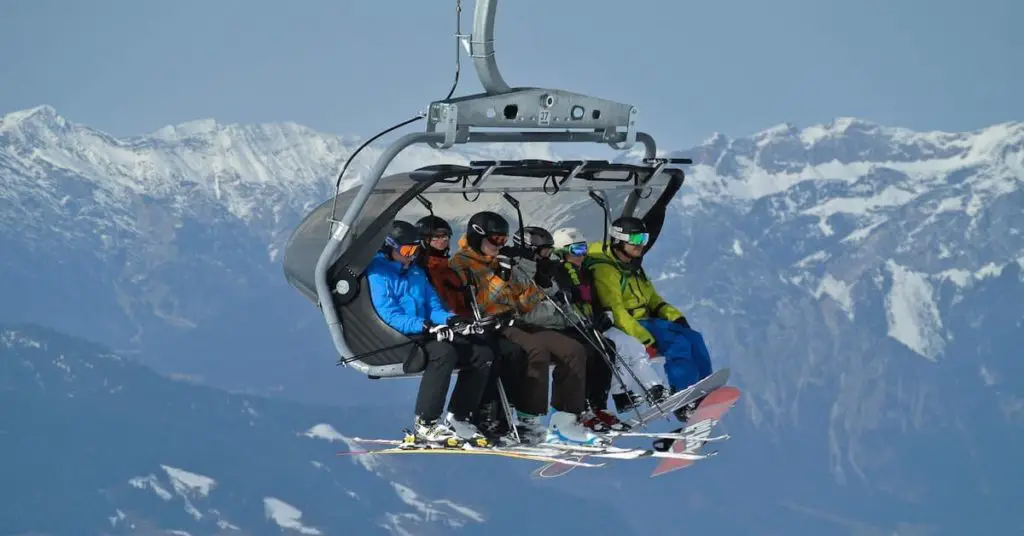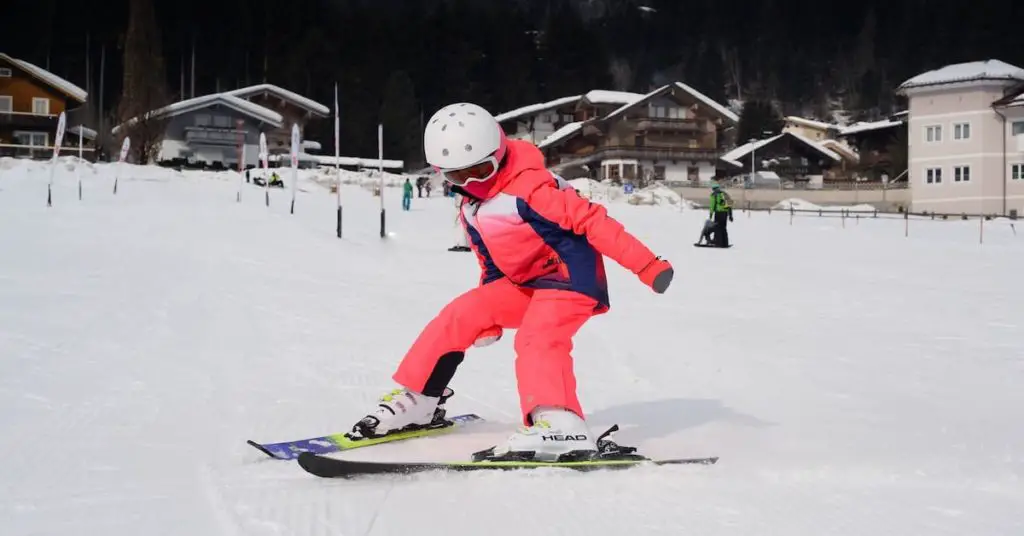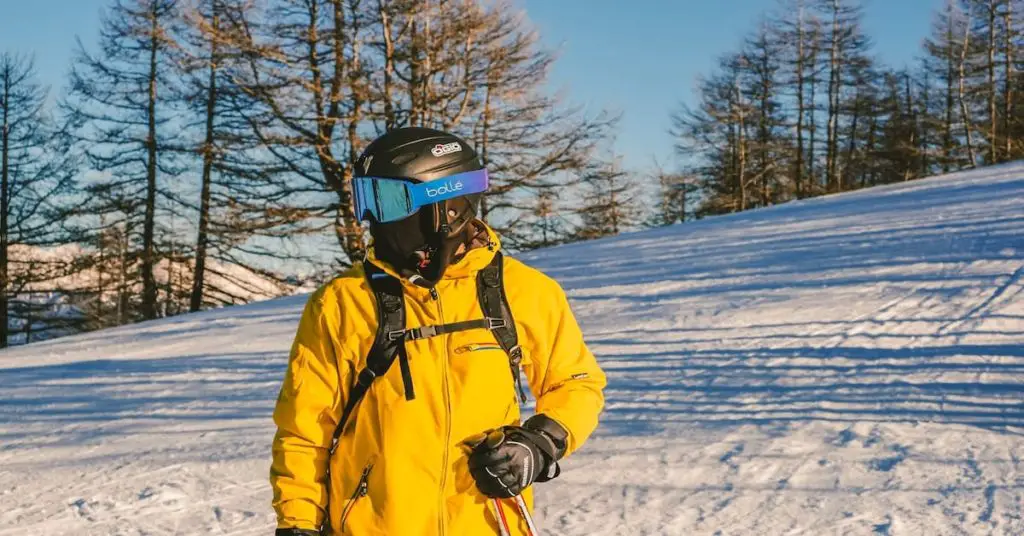Whether you choose to wear a snow helmet is a personal decision. In this article, I’ll share my friend’s and my experience in choosing and buying ski and snowboard helmets for her toddler and me. Also, information about how to choose the right size ski/snowboard helmets for kids and adults. Moreover, the best Bluetooth snow helmets and the best standard snow helmets.
My husband is an adventure skier, and I’m kind of a beginner (I love to ski but can’t ski well.). He wears a helmet when he skis in the backcountry, and if he skis with me or training me, he wears a beanie with the goggles. And me, always helmet on. Because I fall many times, significantly when increasing speed.
Ski and snowboard helmets are not invincible. However, I believe helmets offer extra protection and safety.
Table of Contents
About Ski and Snowboard Helmets
I was wondering why I can’t wear a bike helmet to ski when I plan my very first ski. My husband told me that it is just like running shoes differ from hiking boots; snow helmets are different from a bike or skateboard helmets.
Although my husband told me like that, I still want to try. (where I lives are snow everywhere in the winter.) So I grabbed a bike helmet and snow slider to the hill. And I need to wear an ear cover and strap over it. (Don’t ask me why. It’s cold, mate.) That way, it kept me warm but uncomfortable. Also, deeply felt if I’m at a higher speed and hit my head, I’ll go to dark downstairs straight away.
I searched what makes ski, snowboard, and bike helmets different and found out not only I got this question. And I got the answer.
It designs ski and snowboard helmets for higher impacts than bike helmets because the available speed of skiing or snowboarding is fast than biking. Also, it inserts more insulation material to keep our dome warm. In that way, ski/snowboard helmets are sure to extend by the sides to cover the ears.
Click here to see more explains>>
In short, ski and snowboard helmets are similar. And they have specific features and construction from bike helmets.
Ski and Snowboard Helmet Types
- Half Shell – offers a more comfortable fit and better hearing.
- Full Shell – kid’s helmets are often full shells. It provides better protection to the side of the head and ears.
Ski and Snowboard Helmet Construction
Different construction improves and makes snow helmets safer, more robust, lighter, and more comfortable.
- In-mold
- Hard Shell ABS
- Soft Shell
- Hybrid
In-molded construction uses a lightweight polycarbonate shell that is molded to an EPS foam liner to absorb shock. They’re less rebound during impact and lightweight.
Hard Shell construction utilises a durable ABS shell and is onto protective EPS form and liner. This type of snow helmet is good protection with great value.
Soft Shell snow helmets are often designed for multiple, less intense impacts. Nowadays, many soft shell construction uses a softer PU foam transitioning to a more rigid PU foam for rugged impact protection.
Hybrid construction combines in-mold, and hard shell builds. It features a good balance of durability and weight.
Ski and Snowboard Helmet Feature
- MIPS (Multi-directional Impact Protection System)
- Vents
- Audio
- Camera Mount
- Removable liner
MIPS (Multi-directional Impact Protection System) is a safety technology for helmets, and it reduces harmful rotational forces on the brain in angled impacts to the head.
Vents bring airflow in the helmet, and it allows cool air in and warms up. More vents generally mean increased airflow. Some helmet vents are adjustable, which means you can fine-tune vents without interrupting your ride.
Audio such as built-in speakers and Bluetooth are built-in helmets. It allows you to listen to music, make phone calls.
Camera mount is a built-in mount that offers you add on a camera such as GoPro.
Removable liners like ear pads and drop liners let you easily add on and off for warmth. Also, you can wash it conveniently by simply removing it from the helmet.
Safety Certifications
There are two safety standards used for snow helmets.
- ASTM F2040 – American Safety Standard.
- EN 1077 A/B – European Safety Standard.
Ski and Snowboard Helmets Sizing and Fit
If you’re going to buy a snow helmet at the local store, bring your goggles and try them on with the helmet. That way, you can find the one to fit you comfortably. However, some people like me find it inconvenient. (I love online shopping!)
To shop online, all we need is to prepare a soft measuring tape and stand in front of a mirror (so you can measure head size correctly.).
Measure Your Head
Use a soft measuring tape and wrap it around the widest part of your head. Generally, it’s 1 to 2 cm or 0.5 inches above your eyebrows and ears, don’t put it too tight. Therefore, it’s always a good idea to double-check.
Tip: Measure your head in centimetres. Typically helmets are measured in centimetres.
I thought of wear a beanie in the helmet and found out snow helmets were warm enough for me. So I bought a new one to fit my head, and it works well. I felt much more comfortable, warm enough, and had better ventilation. Some helmets have detachable ear pads and liners for adjustable warmth. Therefore, I can easily add it on and take it off if the temperature changes and I still feel comfortable.
Ski and Snowboard Helmet Size Chart
Determine what size helmet you need by using the measurement and the size chart.
Note: This size chart is a general reference. Please check the brand-specific size chart before purchase.
Adult Snow Helmet Size Chart
| Head Size (cm) | |
| Small | 51 – 55 |
| Medium | 55 – 59 |
| Large | 59 – 63 |
| Extra Large | 63+ |
Youth and Kid Snow Helmet Size Chart
| Head Size (cm) | |
| Extra Small | 47 – 52 |
| Small | 52 – 55.5 |
| Medium | 55.5 – 59 |
Checking The Fit
Shake it, shake it!
After you receive your helmet, please put it on and buckle the chinstrap. If the helmet is too small, your head is feeling the pressure, squeezed, and uncomfortable. If the helmet is too big, you will likely be able to move it around your head. And maybe a space between your forehead or cheek and the padding. Shake your head side to side. A properly fitting helmet should fit you snugly, not tight or shift. Also, it can’t be easily displaced by your hands.
Tip: Pay attention to any pressure or pain points. If you feel any of it, the helmet may not suit you.
Go Skiing & Snowboarding!
Let’s go! Grab your ski bag and hit the slopes.
How to Choose Kids Ski and Snowboard Helmets
The same rules as I described above for helmets apply to kids’ helmets. Fitting kids for helmets is not easy because kids hard to tell you their feelings about the helmet.
I asked my friend how she chose ski helmet size for her three years old son. She told me it was hard.
They bought an on-sale kid ski helmet from Rakuten (One of the Japanese online malls like Amazon) a half year ago. When she put it on their son, it looked alright. After a couple of minutes on the snow, her son started tearing for no reason. No dummy, not hungry, so she took him back to the changing area and took off his ski helmet. While she packed their ski equipment, she noticed that her son returned to his original, full battery. So she went next door and rented a kid ski helmet (measured her son’s head again, the same brand, bigger size). And her son was happy and skied with them that day.
Therefore, take patience and attention if kids keep taking the helmet off, crying, or complaining about anything. It could be the ski/snowboard helmet is too small and make them feel uncomfortable.
Kids Grow So Fast, How Do I Choose Ski Helmets for Them?
Do not size a helmet with space to grow. The helmet only works when it’s fit.
So, how to choose ski helmets for them?
Besides fit and comfort, the third key is the fit adjustment.
If the ski/snowboard kids’ helmets come with a good fit adjustment system, they can grow with kids. Because you can adjust either tighten or loosen the helmet, it’s going to fit a range of head sizes.
Some good fit adjustment kids can get a hold of it and turn it while wearing gloves or mitten on the hill, so it makes it easy to do on the go. My friend’s son loves it, and he feels like a superhero or robot.
Moreover, some ski/snowboard helmets allow you to raise and lower the helmet vertically on a kid’s face. That way, you can eliminate the gap between the helmet and the goggle to get rid of the weather, and they can do it by themselves sometimes.
Tips for skiing with kids—Click Here>>
How Long Do Ski Helmets Last?
There’s no rule written on the stone. Generally, you should replace it once every 5 years if you use your ski helmet regularly. However, various factors will affect how long your ski helmet lasts. Like usage, loss, UV damage, cracked, etc.
For a regular skier, ski helmet replacements are a lot more frequent because of the UV rays.
If you rarely go skiing, or you bought it for a short ski trip and haven’t received any damage on it, your helmet will last much longer.
Overall, it would be best to replace the ski helmet immediately when it gets damaged for safety reasons.
Store Your Ski and Snowboard Helmet Properly
If your ski helmet is not in use, please store it properly to last it longer.
After use or before you store it, check the helmet’s condition. Again, it would help to replace the ski helmet immediately when it gets damaged for safety reasons. Once you’ve made sure your ski helmet is functional, it can be maintained and stored.
Remove and Wash
Remove the pads from your helmet, wash, and them. Gently scrub the helmet’s shell, and make sure you dry them properly. Once every part is dry and clean, put the pads back to the helmet.
I use a case specially designed for ski helmets to store. I searched and said it would help prevent my helmet from getting damaged while in transit or when stored. My ski helmet was not cheap, so I bought the same brand as my ski helmet to keep it.
If you don’t have a ski helmet case, you can use a cover and store it in a safe place (make sure away from UV rays).
Ski and Snowboard Helmets with Bluetooth and Speaker
There is nothing better than listen to music while stuck on the chairlift. To see the best Ski/snowboard Helmets [Click Here]
Best Women and Men’s Ski and Snowboard Helmets
No matter if you’re a newbie or backcountry skier, wearing the right size ski helmet gives you more protection and safety. Nowadays, we want a ski helmet more than protection. We are looking for a protective, comfortable ski helmet with style. [Click Here]
Best Kids Ski and Snowboard Helmets
You may feel an overwhelming confusion to decide the ski/snowboard helmets for kids. No worries! I’ve select the best kids ski helmets for you. Some great protective kids ski helmets can grow with kids and look so great. [Click Here]
